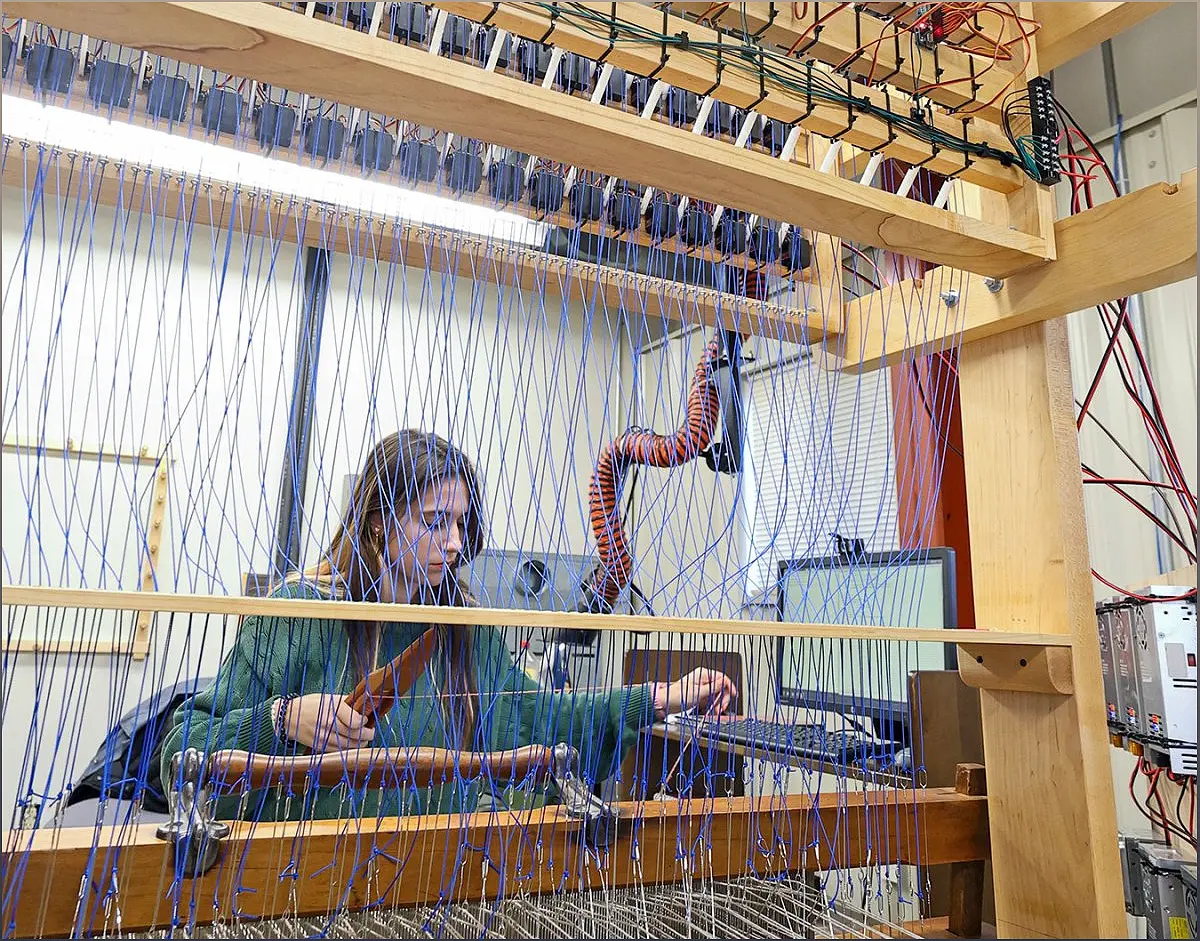Welcome to the world of generative art at Ohio Wesleyan University, where Mathematics, Computer Science, and Fine Arts converge. Professors Craig Jackson and Jeff Nilan have embarked on an innovative journey, utilizing a digitally controlled Jacquard loom to explore the possibilities of generative art. In this article, we will delve into their unique class, the impact of the loom, and the exciting opportunities it presents for aspiring artists and future mathematicians and computer scientists.
The Intersection of Mathematics, Computer Science, and Fine Arts
Explore the fascinating collaboration between different disciplines
Mathematics, Computer Science, and Fine Arts may seem like distinct fields, but at Ohio Wesleyan University, these disciplines converge in a unique and exciting way. Professors Craig Jackson and Jeff Nilan have joined forces to create a class that combines their expertise and explores the intersection of these diverse subjects.
By integrating Mathematics, Computer Science, and Fine Arts, students are exposed to a multidisciplinary approach that encourages creativity, critical thinking, and problem-solving skills. This collaboration opens up new possibilities for artistic expression and technological innovation.
The Digital Jacquard Loom: A Gateway to Generative Art
Unleashing creativity through digital control
At the heart of this collaboration is the digitally controlled Jacquard loom. This innovative device, developed by Professors Jackson and Nilan, revolutionizes the process of weaving and allows artists to explore the principles of generative art.
By using miniature 'servo' motors, the loom provides precise control over the weaving process. This digital control, facilitated by a computer, gives artists the ability to relinquish some control over their designs while still physically weaving the textile. The result is a unique blend of human creativity and digital generative algorithms.
Through the Generative Art course, students at Ohio Wesleyan University have the opportunity to work with this cutting-edge technology. They learn how to harness the power of the Jacquard loom to create intricate and mesmerizing textiles that are the product of both human imagination and computational algorithms.
Exploring the Boundaries of Generative Design
Pushing the limits of artistic expression
Generative design is a rapidly evolving field that explores the creation of complex and intricate patterns through algorithmic processes. The Jacquard loom provides a unique platform for artists to delve into the realm of generative design and push the boundaries of artistic expression.
By relinquishing some control over the design process, artists can embrace the element of surprise and allow the loom's algorithms to generate unexpected patterns and textures. This exploration of generative design principles not only challenges traditional notions of art creation but also opens up new avenues for artistic experimentation.
Through their team-taught course, Professors Jackson and Nilan guide students in harnessing the power of generative design. They encourage students to experiment with different algorithms, explore the interplay between human creativity and machine-generated patterns, and discover new possibilities for artistic expression.
Hands-On Learning with the Jacquard Loom
Bringing digital microcontrollers into the world of art
The Jacquard loom not only offers artistic possibilities but also serves as a hands-on learning tool for students in the Fine Arts department. Located in Haycock Hall, the loom provides a tangible example of how digital microcontrollers can be integrated into art production and installation.
Students have the opportunity to work directly with the loom, gaining practical experience in weaving and understanding the intricate relationship between technology and art. This hands-on approach enhances their understanding of digital microcontrollers and expands their creative horizons.
Furthermore, the collaboration between Professors Jackson and Nilan has resulted in presentations at professional conferences and the publication of a peer-reviewed paper. Their groundbreaking work has not only enriched the educational experience at Ohio Wesleyan University but has also contributed to the wider field of generative art.
Inspiring the Next Generation of Artists and Technologists
Creating opportunities for aspiring artists and mathematicians
The team-taught course and the digital loom project at Ohio Wesleyan University contribute to the goals of both the Fine Arts and Mathematics & Computer Science departments. The project provides aspiring artists with unique opportunities to explore the intersection of art and technology while enhancing the applied offerings for future mathematicians and computer scientists.
Students like Elsa Hoam and Tera Berko have embraced the chance to work with the Jacquard loom, even if they are not enrolled in the generative art class. Their experiences highlight the excitement and enthusiasm that this project has generated among students across different disciplines.
By fostering collaboration, interdisciplinary learning, and hands-on experiences, Ohio Wesleyan University is nurturing the next generation of artists and technologists. The impact of this project extends beyond the classroom, inspiring students to push the boundaries of creativity and explore the endless possibilities at the intersection of art, mathematics, and computer science.

